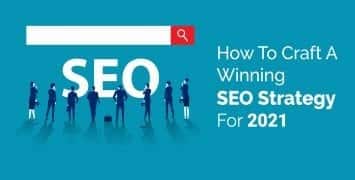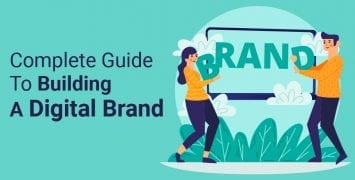We all know how important customer acquisition is, but the real question is how to do it well. Customer acquisition strategies are plenty, and there’s a reason for that. Every business is unique, which means new or modified methods for reeling in new customers create new acquisition opportunities.
Customer Acquisition 101
What exactly is customer acquisition? Well, it’s the process of bringing in new customers or clients for your business. On the surface, it’s quite simple. The complexities arise when we delve into how to attract clientele to your company. Businesses deploy a wide range of customer acquisition methods to get off the ground, sustain growth, or position their company for an “exit strategy” like going public.
Customer acquisition extends further than traditional marketing efforts. It’s omnipresent, meaning it goes above and beyond singular channels or strategies. You’ll need to develop relationships with potential clients, manage their needs, and offer up valuable information to funnel them through the purchase or partnering decision.
It’s more than an ad campaign or email newsletter — it’s all about successful conversions. Evaluating your customer acquisition cost (CAC) can certainly help inform marketing decisions. Data is the #1 player in the customer acquisition game — helping determine ROI on lead generation tactics and craft new efforts going forward.
So, how do successful businesses utilize industry trends, data, economic shifts, and emerging marketing avenues to acquire new customers? Let’s take a look.
Acquisition Strategies That Work
There’s no “one-size-fits-all” solution to customer acquisition. In fact, you’ll have to utilize multiple avenues or strategies to get the most out of your efforts to bring in new customers.
It’s not a matter of:
More=Better.
Instead, it’s about finding the right methods for your business, strategies that work in synergistically with one another to generate new customer opportunities and convert.
Now, we could break down every customer acquisition tactic for every industry — but we’d be here for ages. So instead, we’re going to discuss some successful digital strategies that every market can take advantage of to create new customer opportunities.
Search Engine Optimization
Also known as SEO, search engine optimization is perhaps the single most successful and crucial customer acquisition methods in the modern digital ecosystem. It’s a long term strategy that helps increase website traffic and earn more conversions for your company.
SEO is all about making your website more “search engine friendly” so that you’re able to rank higher for relevant keywords in your industry. Most people won’t delve deeper than the first page of search results, which means popping up higher in the rankings gives you a serious edge on the competition.
For example:
Let’s say you’re an auto repair shop in Minneapolis, MN. What do you think people would search to discover your business? How about:
- Auto repair Minneapolis
- Auto repair near me
- Best auto repair in Minneapolis
- Cheap auto repair Minneapolis
- Auto shops in Minneapolis
Did you notice something similar about these keywords? If you guessed location, you’re correct. One of the best ways to optimize keywords is through location, helping potential customers in your area who are searching for your product or service discover…you! Local SEO takes advantage of customers that are near and dear to your product or service, and it’s an important part of search engine optimization.
But, that’s not the only way a robust SEO strategy takes advantage of keywords, as they can involve relevancy as well. If we’re sticking with the auto repair scenario, we can also look at popular services that auto shops offer.
- Oil changes
- Tire rotation
- Check engine light
- New car battery
You can even use keyword research tools to make your life easier.
As you can see, keywords play an important role in SEO strategy, and unearthing the most relevant and powerful ones can have a significant impact on customer acquisition — especially during the “consideration phase.”
The real magic comes with targeting. SEO allows you to pinpoint your exact customer base — those interested in your business, product, or services right now. It narrows the scope of your marketing efforts, giving you incredible precision in converting potential customers.
People searching for your products or services are clearly interested, and boosting your website’s rankings does a ton of the legwork traditionally needed to garner new clientele.
As we said, it’s a long term strategy. SEO isn’t a “one-click” tactic. It takes continuous optimization and tweaking to keep your website ranking high for high-value keywords. If you’re looking for immediate results, you’ll likely want to try our next customer acquisition tactic. However, it’s definitely got the most ROI, as it brings in a ton of traffic and customers that are prepared for conversions.
Pay-Per-Click (PPC)
If SEO is a marathon, PPC is a sprint. It utilizes the same platform, as it’s all about search results. The real difference is how.
If you’ve ever searched for something on Google, the first results come with a little green box marked [Ad]. These are what’s known as Google Ads — and are a popular form of PPC advertising.
PPC also runs on keywords, but instead of generating organic traffic, it operates using a pay-per-click method. You set up an amount you’re willing to pay, and every time someone clicks on the [Ad], you pay. It’s that simple.
This is a great way to take control of your budget, as you know exactly how much you’re going to spend. You can easily identify you’re ROI by looking at how much traffic and conversions you generated using PPC.
It’s also a great way to get an increase in traffic fast. The only downside is that you’ll need to continuously pay into it in order to see returns, unlike SEO, which offers a far more long-term investment that sees constant returns without regular payment.
Email Marketing
Most people think that email is dead — but that couldn’t be further from the truth. Studies estimate that every dollar you spend on email marketing returns $42. That’s a serious ROI. Now, let’s get some things straight — we’re not talking about spamming countless people with email content.
You need to obtain consent to contact potential customers, whether it’s through a newsletter sign up or another avenue. However, once you have a significant contact list, you’re able to keep potential or current customers up to date with quality information, deals, and even entertainment.
Engaging with subscribers through personalized content, giving them access to more information regarding your product or service, and even implementing a referral program is all part of remaining transparent and helpful as a business. It’s all about trust and relationship building.
You can tailor email content to various buyer personas and get creative. The more individualized your email marketing is — the better. It’s not a one-trick pony, as it needs to be used alongside additional customer acquisition strategies to find the most success. These strategies include link building, which is a primary focus of SEO. You’ll notice that trend throughout this article, that certain customer acquisition tactics work well with others — this is no exception.
Take a look at The Science Behind Outreach Emails for Link Building to learn more.
Content Marketing
Now, content marketing won’t bring in customers by itself — but we’d be lying if we didn’t mention its importance in the customer acquisition sphere.
Content marketing is all about creating a buzz or keeping potential customers engaged, but most importantly, it’s about helping customers learn more about your company. So, what does content marketing look like, and what are some trends?
- Informational webpages
- Infographics
- Blogs
- Videos
- Live videos
- Graphics
- Photos
- Interviews
- Webinars
- eBooks
- Testimonials
- THE LIST GOES ON
The more dynamic and flexible digital mediums become, the more content avenues there will be — and there’s no sign of slowing down.
You can dive into industry-related topics through educational content. You can raise brand awareness through engaging content efforts. You can prove your prowess through testimonials or review-related content.
Some of these content pieces can be mixed in with other customer acquisition strategies like SEO. Through link building tactics, you can both inform customers with articles about industry-related topics while also boosting page relevancy and rankings through SEO methods.
Content marketing has an interesting reputation, and while nearly every marketing expert will tell you how important it is — it’s nothing without a legitimate strategy behind it. You can’t really just throw content into the digital ether and hope something comes back around.
Instead, you’ll need to research industry-related matters and determine:
“What the best way to keep my audience informed or engaged?”
The answer to that question can help guide your content creation for improved lead acquisition.
Don’t believe us? Here’s what 101 experts have to say about content creation and engagement.
Referrals + Reviews
For nearly every company, referrals and reviews can be a driving force in client acquisition. While it’s easy to understand why you think you’re company is the bee’s knees — you’re not exactly an unbiased opinion.
Building a brand means finding the right foundation and support beams to hold you up; that’s where having a customer or client base that advocates for your product or service can be a game-changer.
Customer referral programs offer a fantastic avenue for persuading potential customers to give your business a shot. Email marketing is a great avenue for this type of program. You can offer up incentives like discounts or loyalty rewards as well, which no satisfied customer will complain about.
Reviews may not be a “strategy,” but they are important. If you’re shying away from publicizing customer’s experiences with your company, it’s not a great look. Instead, encourage customers to leave reviews and engage in their experiences with your business. The great reviews will do wonders for your trustability, and negative reviews offer an opportunity.
What do we mean?
How you manage dissatisfaction is telling, it shows how much you care about your customers as individuals. They can either be a learning experience that illuminates areas of improvement. Or, even better, they can be a great opportunity to solve an issue in the digital public eye, both building trust and possibly retaining a customer while convincing potential customers that you’re a reliable company that cares.
Reshape Your Acquisition Strategy
Hopefully, your business is already utilizing some of these methods as we speak. If not, you’re missing out on customer acquisition each and every day. However, even if you are implementing these tactics, you can always refine and optimize them for the biggest ROI.
Creating an effective strategy takes time — and there will certainly be some failures on the way. However, don’t get discouraged. Just because something didn’t pan out the way you expected doesn’t mean its not an effective strategy. Instead, you may need to tweak or alter your methods to get it down right.
- Don’t get too hung up on one channel; make sure you’re always looking at the bigger picture. As we’ve mentioned, a true customer acquisition strategy isn’t just one method. It’s all about combining and utilizing various digital strategies together to reach customers at every stage in the buyer cycle.
- Use your data. Analytics plays such a key role in customer acquisition, and we cannot stress their importance enough. Track and monitor everything, and use the data you’ve collected to inform your next move. You can track dwell time, undergo A/B testing, utilize various CTAs (call to actions), make keyword pivots, the list goes on and on. There’s no such thing as failure in digital marketing. Instead, it’s all about using data to improve time and time again.
So, there you have it — our five customer acquisition strategies that have helped us and countless partners reel in new clientele day in and day out.




